
Time to Fill: Definition, Formula, and How to Reduce

Recruiters know that the average time to fill a position can drag on for about a month, while over half of all job seekers expect a response within two weeks of interviewing.
Top-tier candidates won’t wait; agencies with efficient hiring processes secure the best talent. For agency recruiters, understanding a key metric like time-to-fill is crucial.
This metric offers valuable insights into your current recruiting practices. Agencies that prioritize time-to-fill are better positioned to attract and place the most qualified candidates.
What is Time to Fill?
Time to Fill is the time it takes a company to fill a job opening. It’s the number of days from when they say “Yep, we need someone for this!” to when the new hire says “Alright, I’m in!”
Now, different companies might start counting from slightly different points. Some might start when they first realize they need someone. Others might wait until they post the job online.
The ending point is typically when a candidate accepts the job offer. Here’s the Time to Fill formula:
Time to Fill = Date Candidate Accepts Offer – Date Job Requisition is Approved (or Posted)
If you posted a job on June 1st, and the candidate accepted the offer on July 1st, your Time to Fill would be 30 days.
A shorter time to fill is a sign of an efficient hiring process. It also saves money. Plus, it makes the whole experience better for the candidate applying.
If things move quickly, candidates are more likely to stay interested. And hiring top talent is way easier that way.
It’s important to know that Time to Fill is different from Time to Hire. They’re related, but not the same. Time to Fill is about the whole hiring process, from start to finish.
Time to Hire, on the other hand, is more about the candidate’s journey. It measures how long it takes from when they apply to when they accept the offer.
You can also check out our guide on Recruitment 360 and strategic recruitment plans to enhance your hiring strategy.
Why Measure Time to Fill?
Time to fill is a crucial metric in recruiting since it’s not just about how fast you hire for your clients. It impacts how well the company performs, how candidates feel about them, and their bottom line.
Impact on Organizational Efficiency
An empty position can really mess things up. According to a survey conducted by The Society for Human Resource Management (SHRM), the average time to fill in the US is 44 days. And that can be even longer depending on the industry and how complicated the job is.
During that time, other employees are picking up the slack. They’re doing double duty, which leads to stress, low morale, and even burnout. And if it’s a really important job, like in healthcare or management, those delays can seriously hurt service and revenue.
Padma Luhana, a strategic HR expert, nailed it when she said, “The longer it takes to fill a job opening, the longer the organization will be without a critical role filled, which can lead to decreased productivity, lost revenue, and increased stress on the existing staff”.
See? It’s like a domino effect. One open position can impact the whole team.
Candidate Experience and Employer Branding
Time to fill also affects how candidates see your clients. A survey found that 23% of candidates lose interest if they don’t hear back within a week. And almost half (46%) are gone after two weeks of radio silence.
A slow hiring process can scare off even the best candidates. They’ll just go somewhere else. As Hireology notes, “A speedy recruitment process enables companies to secure the best candidates before they are hired by competitors. Additionally, candidates who receive a quick offer are likely to feel valued and appreciated”.
Cost Management
Vacant positions cost money and the longer a job stays open, the more your clients spend on advertising and recruiters.
Industry benchmarks say a bad hire or even just a delayed hire can cost thousands, even tens of thousands of dollars.
Workforce Planning
Time to fill can also help your clients plan for the future. By tracking this metric, they can predict when they’ll need to hire, budget better, and find any bottlenecks in their hiring process.
So, yes, Time to Fill is way more than just a number.
How to Calculate Time to Fill
Let’s see how to calculate Time to Fill – both for your whole agency and specific clients or roles. So, there are two main ways to look at Time to Fill:
- Average Time to Fill (Agency): This is the average time it takes to fill all the jobs for all your clients. It gives you a general overview of your hiring efficiency.
- Time to Fill for Specific Clients/Roles: This is the time it takes to fill jobs for a specific client or a certain type of job. This helps you spot any bottlenecks or problems you might have when hiring for certain clients or roles.
How to Calculate Average Time to Fill as an Agency
This is pretty straightforward. You just add up the Time to Fill for all your open positions for all clients and then divide by the total number of positions you filled.
Here’s the formula:
Average Time to Fill (Agency) = Sum of Time to Fill for All Roles / Number of Roles Filled
Here are the steps to calculate the average time to fill:
- Collect Data: Write down the start date (when the job was approved or posted) and the end date (when the offer was accepted) for every job you filled during a certain period.
- Calculate Time to Fill for Each Role: Subtract the start date from the end date for each job.
- Sum Up All Time to Fill Values: Add up all the days it took to fill each role.
- Divide by the Number of Roles Filled: Divide the total number of days by the total number of roles you filled.
Here’s an example:
- Role 1: 20 days
- Role 2: 30 days
- Role 3: 40 days
Average Time to Fill = (20 + 30 + 40) / 3 = 30 days
How to Calculate Time to Fill for Specific Clients or Roles
This is similar to the overall average, but you’re only looking at specific clients or departments.
Here’s the formula:
Time to Fill (Specific Client/Role) = Sum of Time to Fill for Roles in the Category / Number of Roles Filled in the Category
Here are the steps to calculate time-to-fill for a specific client or role:
- Filter Data by Client or Role: Figure out which clients or roles you want to look at (like Client A, Client B, or Engineering roles, Marketing roles).
- Calculate Time to Fill for Each Role in the Category: Subtract the start date from the end date for each job within that specific category.
- Sum Up All Time to Fill Values for the Category: Add up all the days it took to fill those jobs in that category.
- Divide by the Number of Roles Filled in the Category: Divide the total days by the number of roles filled in that category.
Here’s an example:
Client A (or an Engineering Department):
- Role 1: 25 days
- Role 2: 35 days
- Role 3: 45 days
Time to Fill = (25 + 35 + 45) / 3 = 35 days
Industry Benchmarks for Average Time to Fill
How does your Time to Fill stack up against everyone else in your clients’ industries? Well, it totally depends on what industry you’re in. Different industries have different hiring challenges and needs, so their averages are all over the place.
General Average
Across all industries, the average Time to Fill is somewhere between 36 and 44 days. Think of this as a rough baseline if you’re trying to understand the efficiency of the hiring process.
Industry Variations
- Energy & Defense: These jobs often take a long while to fill. We’re talking around 67 days on average.
- Engineering: Engineering roles are similar. They also tend to take a while to fill, usually around 62 days.
- Competitive Sectors: If you’re in a super competitive industry, like tech or healthcare, you need to move fast. Companies in these sectors often aim for a Time to Fill closer to 20 to 30 days.
Top Performers vs. Lower Performers
The interesting part is that some recruiting teams are way better than others. The top performers can fill jobs in as little as 34 days.
Meanwhile, the teams that are struggling might take up to 91 days! That’s a huge difference! It just shows how important it is to have a solid recruiting strategy and process.
Recent Trends
As of early 2024, the average Time to Fill in the US was reported at 36 days. So, things seem to be getting a little faster overall, which is good news!
Average Time to Fill by Industry
Here’s the average time to fill (in days) for all the top industries:
| Industry | Time to Fill (Days) |
| Energy & Defense | 67 |
| Engineering | 62 |
| Investment Banking | 60 |
| IT | 41 |
| Professional Services | 47 |
| Tech & Media | 20 |
| Automotive | 16 |
| Cleaning Services | 14 |
| Education & Child Care | 18 |
| Fitness | 22 |
| Healthcare | 18 |
| Home & Commercial Services | 17 |
| Hospitality | 14 |
| Personal Care | 17 |
| Restaurant & Food Services | 18 |
| Retail | 18 |
How to Reduce Time to Fill
Let’s look at the best ways to reduce time to fill in 2025.
1. Communicate Proactively
Want to keep candidates hooked and speed up the hiring process for your clients? Proactive communication is your jam.
Proactive communication means reaching out to candidates before they even reach out to you. It shows your clients are on top of things and creates a great candidate experience, which is super important these days.
According to LinkedIn’s 2024 Global Talent Trends, most candidates (over 80%!) say a positive experience influences whether they accept a job offer.
Right from the start, tell candidates exactly what they can expect from your clients. Give them a timeline, explain the interview formats, and lay out what happens at each stage of the process.
For example, you can use Recruiterflow to send an automated email right after they apply through you, outlining the next steps and how long things usually take. You can also set up automated reminders for follow-ups and updates so no one feels forgotten.
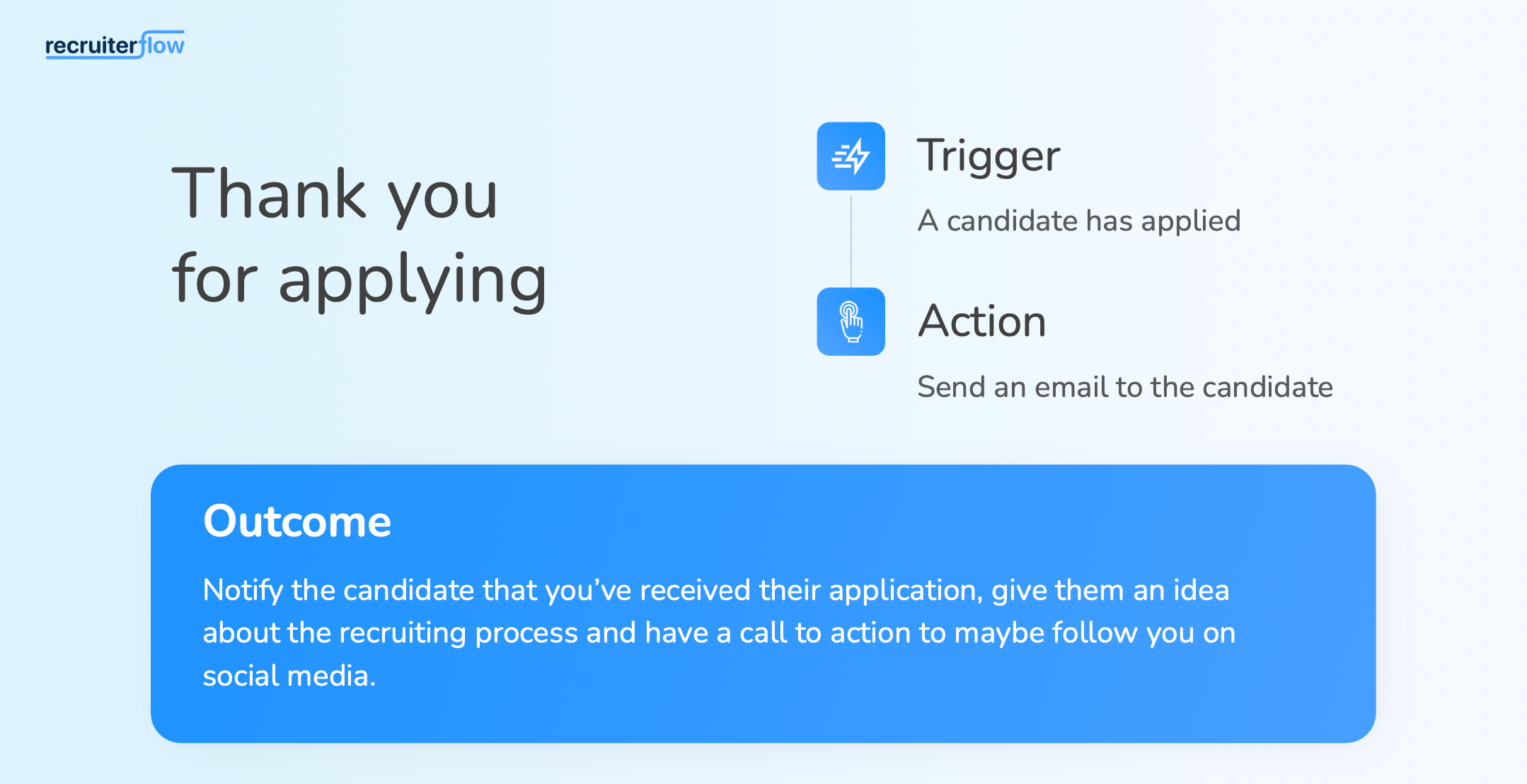
Keep them in the loop throughout the whole process. Regular updates, whether by email or through your client’s recruitment platform, are essential.
Candidates who get regular updates are way more likely to think positively about the company they might work for, according to a survey by Talent Board.
Manage candidate interactions efficiently on behalf of your clients with Recruiterflow. You can nurture candidates and keep them informed throughout the process with automated email campaigns.
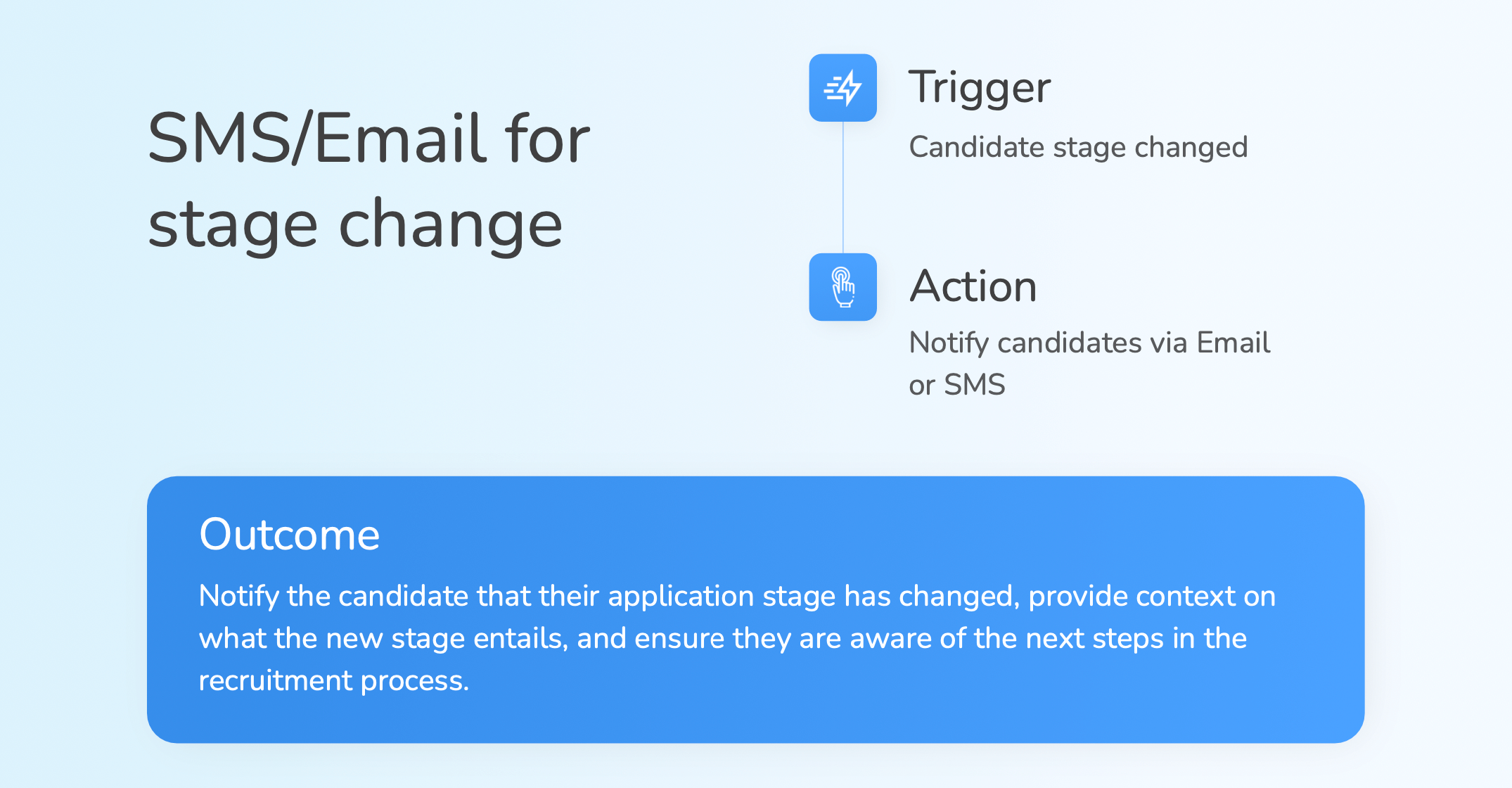
2. Screen Candidates Efficiently
One of the best ways to speed things up for your clients is to streamline how you screen candidates. But you don’t want to sacrifice quality. So, how do you screen efficiently and find the right people?
Screening tools can help. Especially an AI-powered resume screening tool like the one Recruiterflow offers. The tool instantly analyzes the job details and ranks the best candidates. This means you can quickly find the most promising candidates for your clients.
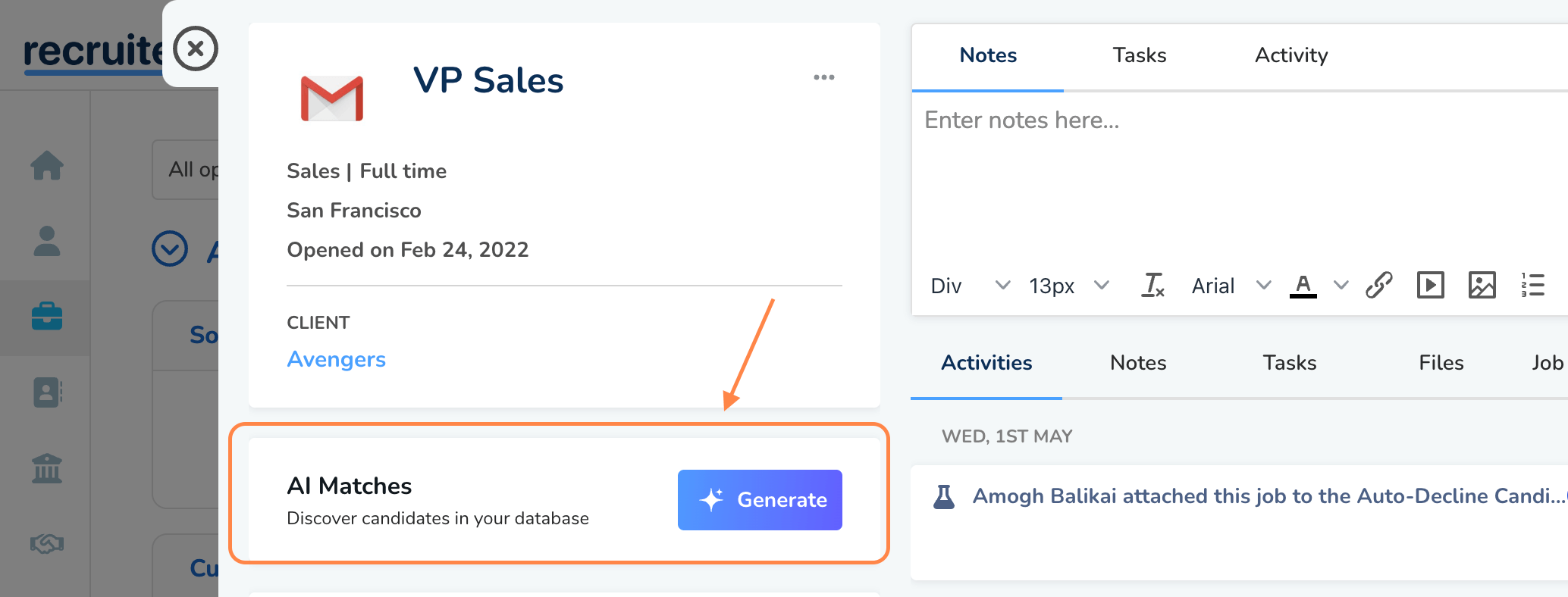
Online assessments, like Codility for tech roles or Criteria Corp for general assessments, are also super helpful. They let you check candidates’ skills before the interview stage.
You can also use Recruiterflow to create tailored tests that assess things like technical skills and how they might behave in the workplace.
Structured interviews are another great idea. You ask all candidates the same set of questions for a given role. This makes the process more efficient and less biased.
Create a question bank that aligns with the job requirements. Take help from RF GPT for creating custom screening questions relevant to a specific role.
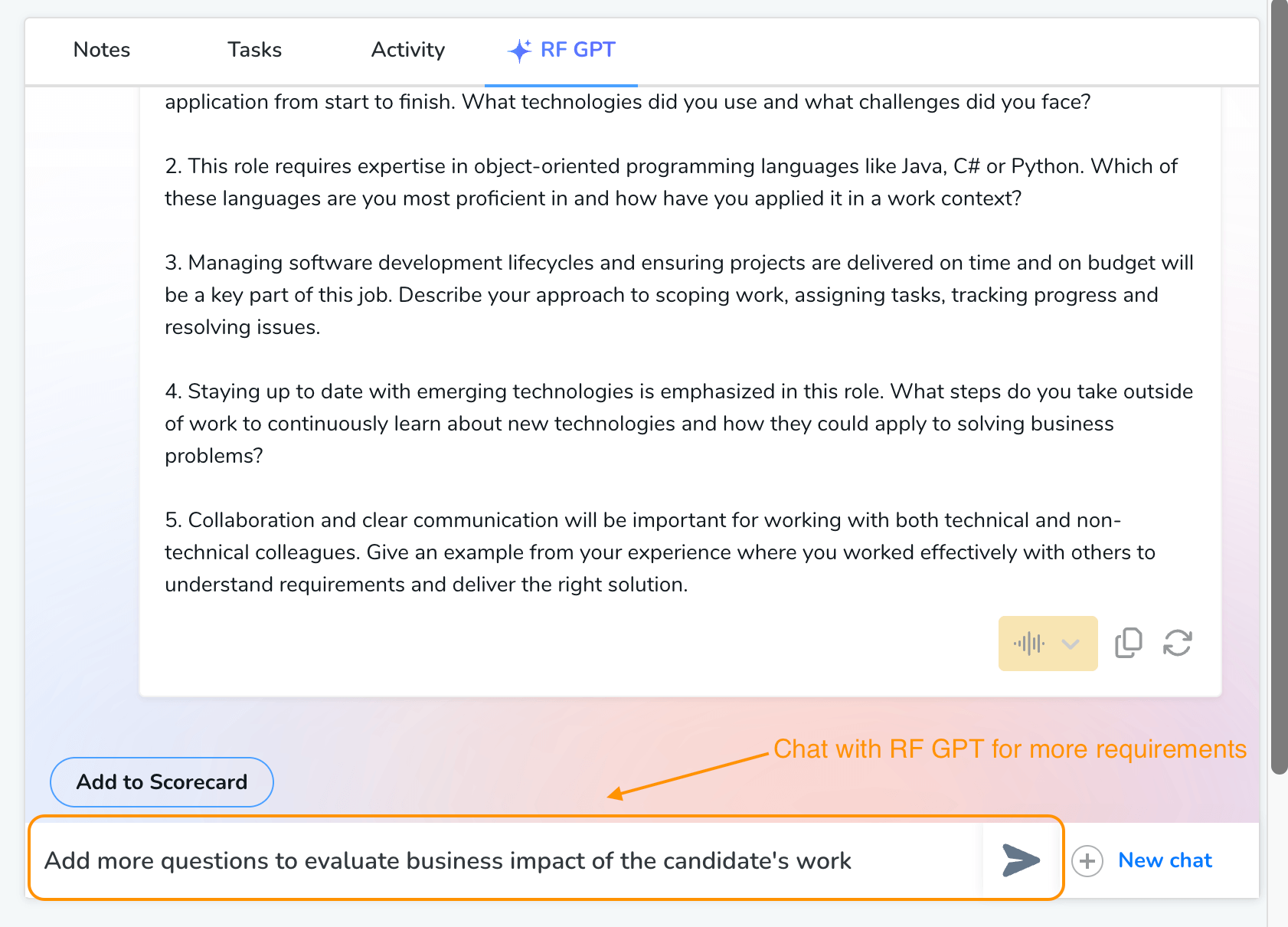
Also, use a scoring system to rate candidates on each question. This makes it way easier to compare them. You can use Recruiterflow’s interview scorecards for this. Along with scoring, it also allows you to include feedback from everyone involved.
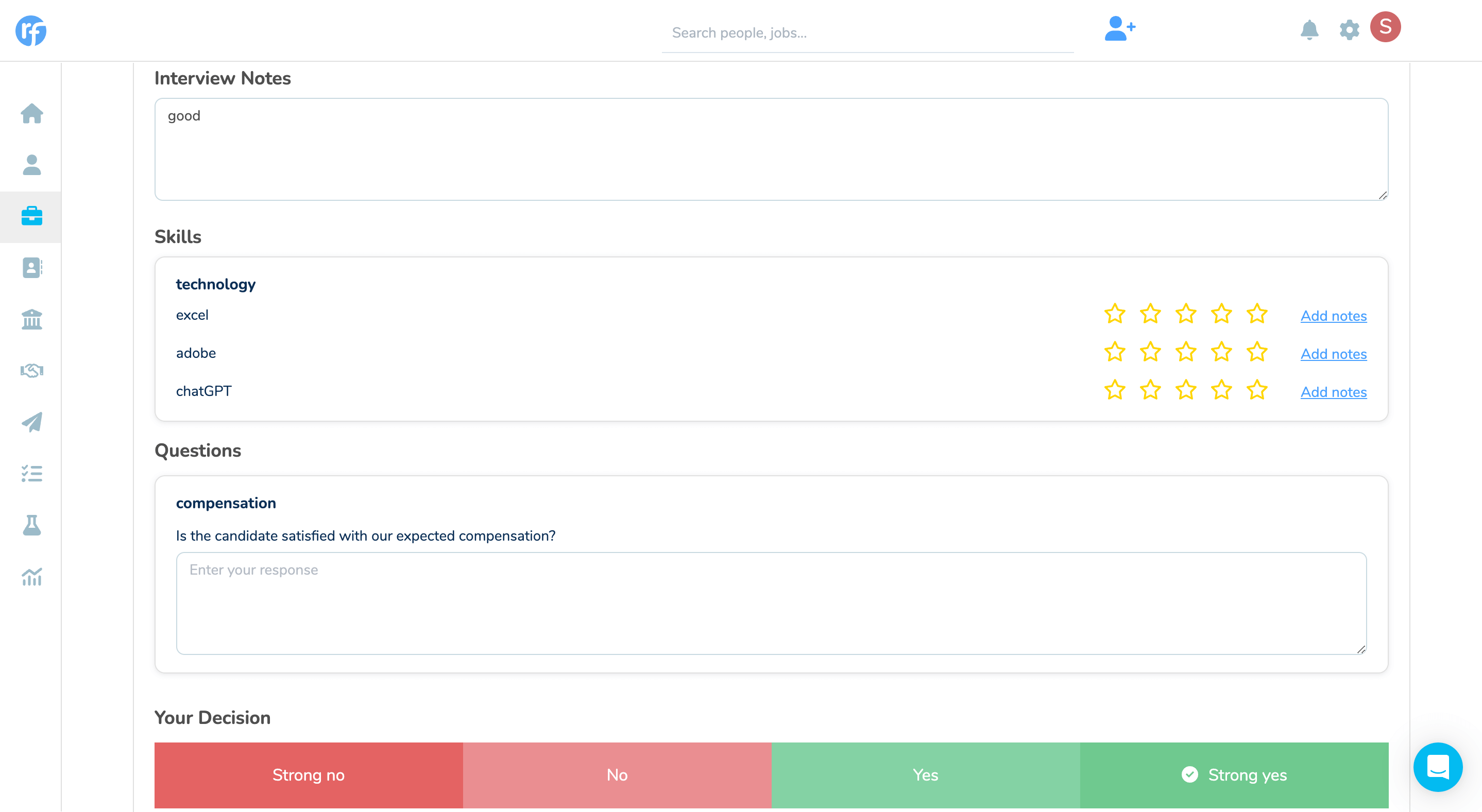
3. Build Talent Pools
Having a talent pool in 2025 is essential for your clients. It’s basically a database of awesome potential candidates who are already interested in their company or who fit the kind of people they’re looking for.
By keeping in touch with these folks, your clients can fill open positions way faster when they pop up. So, how do you build and maintain a killer talent pool for them?
First off, it’s not a “set it and forget it” kind of thing. You have to keep those relationships going! Check in with candidates every now and then, just to see what they’re up to and if they’re still interested in opportunities with your clients.
For example, PAC Solutions, a leading recruitment firm in Virginia, uses Recruiterflow to automatically send stay-in-touch follow-ups to candidates who are marked as ‘Rockstar Candidates’.
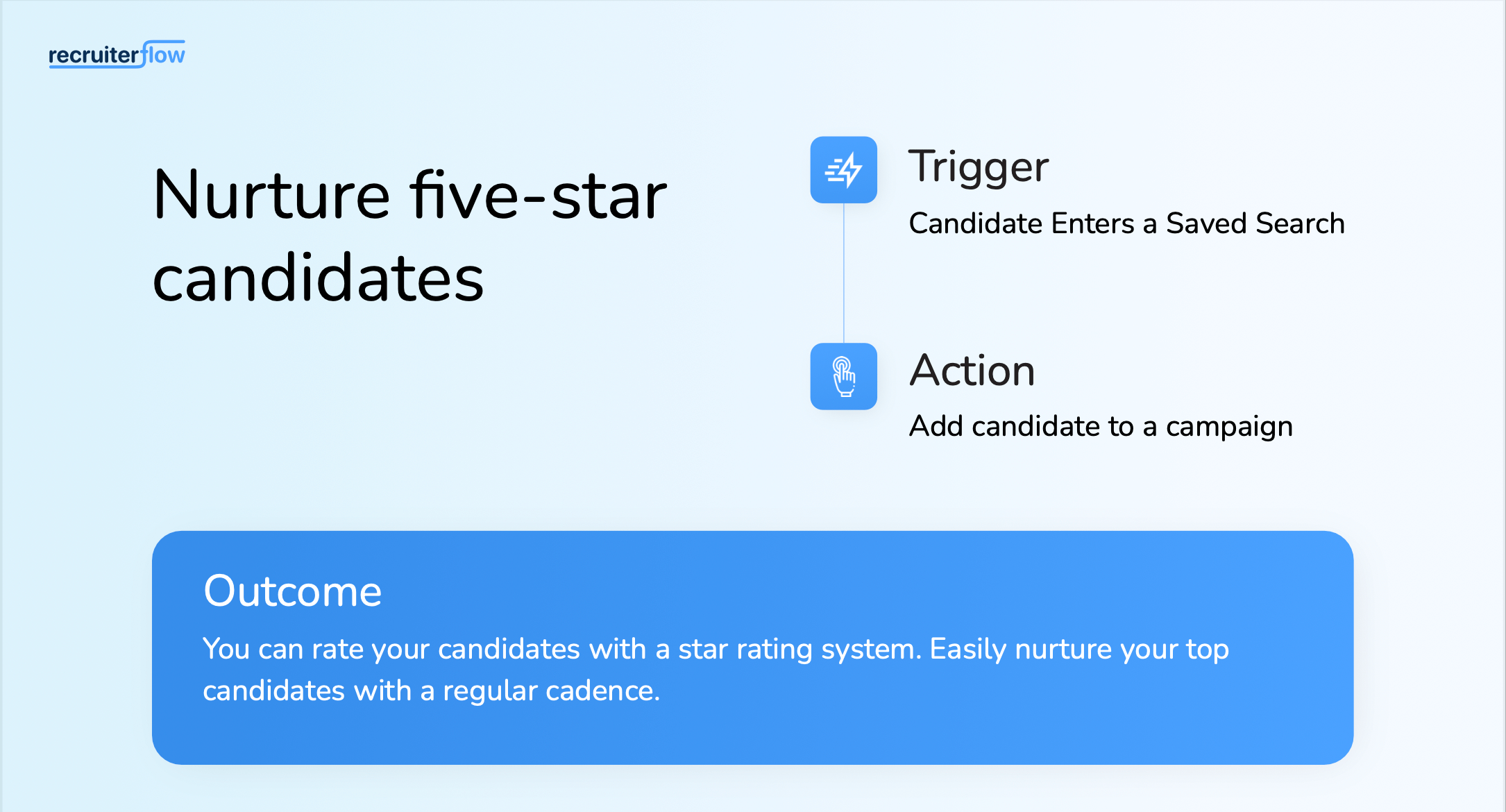
Personalized communication is key. Tailor your messages based on what they’re interested in and what you’ve talked about before.
And ask for feedback! Ask candidates about their experience. It can help you improve the process and keep candidates engaged. Plus, it shows you care about what they think.
Recruitment tech can make your life so much easier here. Tech like Recruiterflow combines ATS, CRM automation and a centralized database to help you manage all your candidates, passive or active, in one place and nurture relationships with them.
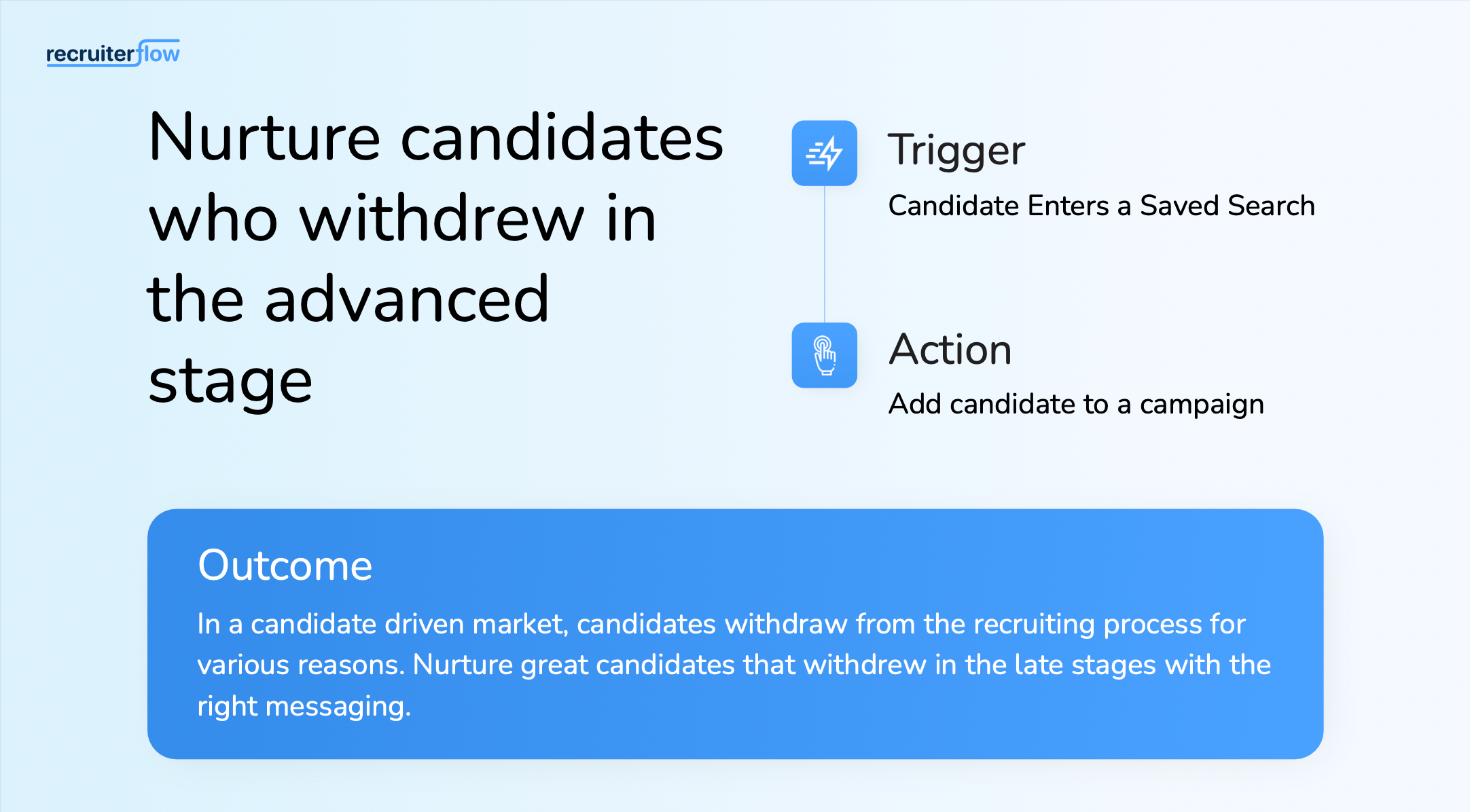
Also read: 10+ Actionable Tips to Improve Candidate Experience in 2025
4. Optimize the Interview Process
A smooth and efficient interview process saves your client’s time and makes candidates feel good about the hiring process.
Before you even start scheduling, make sure you have a rock-solid job description. It should clearly spell out:
- What the person will be doing day-to-day
- What skills do they absolutely need
- What kind of personality fits in with their company culture
Knowing exactly what you’re looking for helps you avoid wasting time interviewing people who aren’t a good fit for your clients.
Recruiterflow’s AI recruiting agent can help you quickly write accurate job descriptions from scratch or rewrite existing ones based on key job details such as skills and experience.
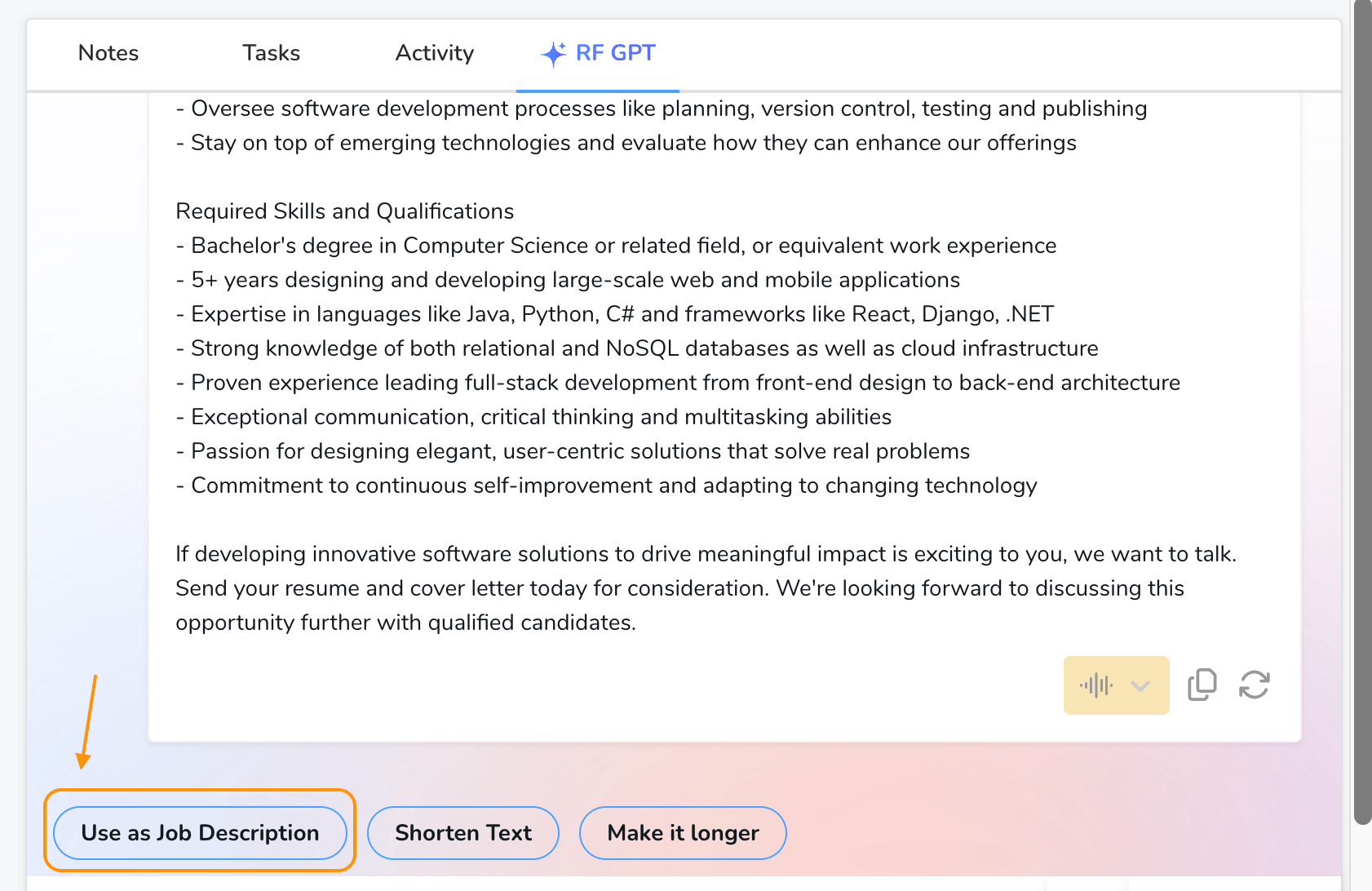
Training your clients’ interviewers is so worth it. According to Dr. John Sullivan, a well-known HR thought leader, “Training interviewers can reduce the time to fill by ensuring that they are effective and efficient in their evaluations.”
Make sure everyone understands the job requirements and the structured interview process. Encourage them to share their experiences and learn from each other. Role-playing mock interviews is also a great way for them to practice and get better at it.
Having a clear timeline for the whole interview process is also super important. Try to schedule interviews within a week of getting applications. You can use Recruiterflow to automate interview scheduling and avoid all the back-and-forth.
Also, video interviewing platforms like HireVue let you do initial interviews asynchronously. Candidates record their answers whenever it’s convenient for them, which saves time for everyone.
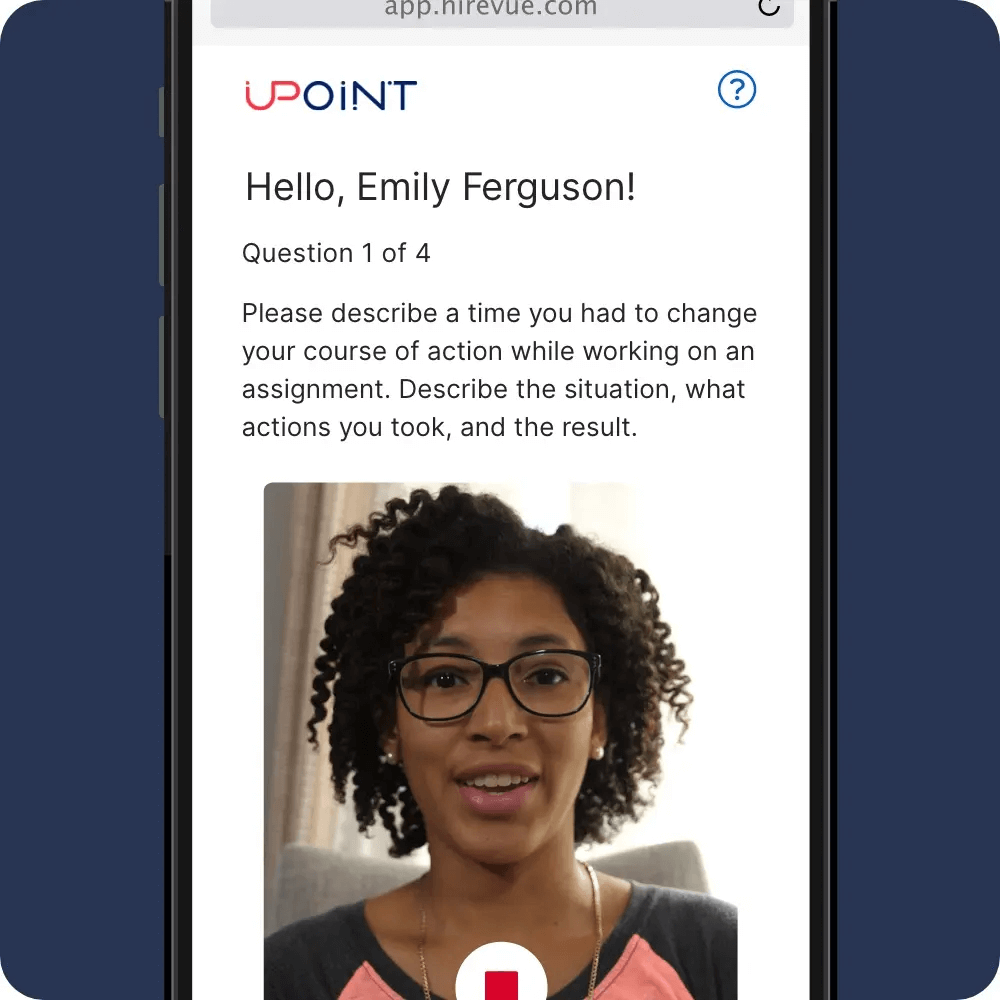
5. Promote Internal Collaboration
Isn’t it easier to make informed decisions when everyone is on the same page, especially when working with clients? But how do you make that happen?
First, you figure out who is doing what within your agency. Make a recruitment playbook. Write down everyone’s role in the hiring process – sourcing, screening, interviewing, onboarding, the whole shebang, including client communication responsibilities.
An ATS like Recruiterflow helps you with this. You can assign tasks, track progress, and make sure everyone knows what they’re responsible for.
Make sure to tap into all of Recruiterflow’s collaborative capabilities. It lets everyone on your team access candidate profiles, leave comments, and track the whole hiring process in one place.
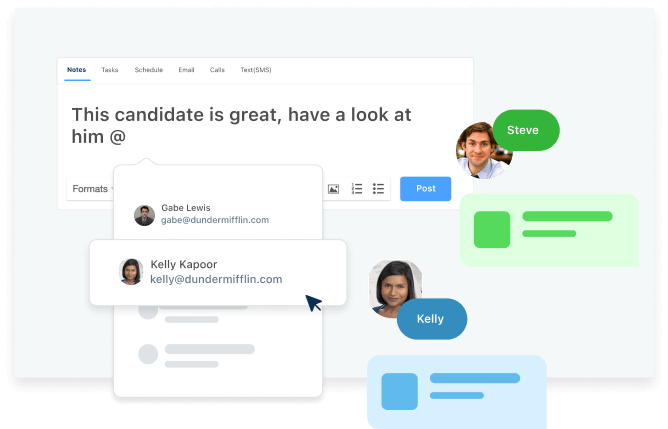
Keeping the lines of communication open is key. Regular check-ins – weekly or bi-weekly – are a must. Just a quick meeting to talk about what’s going on with recruitment keeps everyone in the loop and lets you make changes on the fly if you need to.
Slack or Microsoft Teams are great for staying in touch in real-time. Easy to share updates, ask questions, and just generally keep the conversation flowing, both internally and with clients where appropriate.
And collaborative video interviewing tools, like Spark Hire, are ideal. You can conduct interviews together, share feedback instantly, and make decisions as a team.
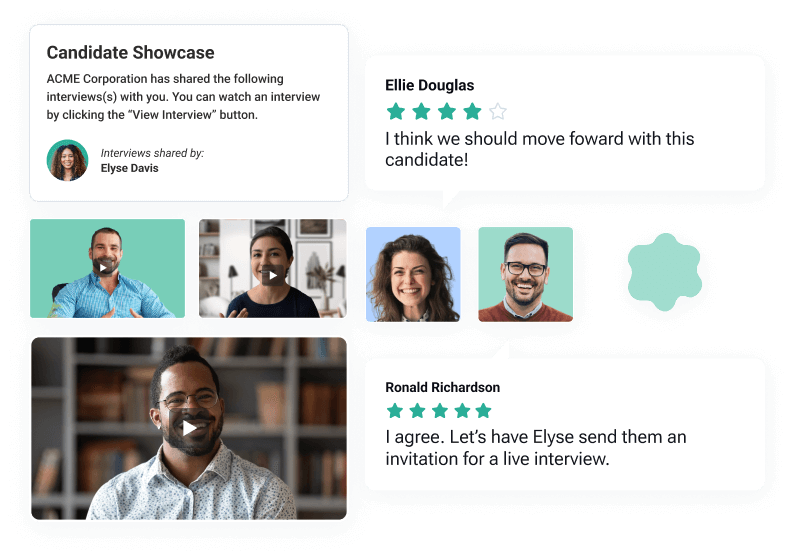
6. Rely on Data
Using data-driven strategies can seriously speed things up, get better candidates, and just make their whole hiring process way more effective.
Recruiterflow helps your agency track all the critical candidate and client metrics. Along with candidate metrics such as time to fill, fill rate, cost per hire, quality of hire, etc., you can also track client metrics like client submissions, revenue per client, and client engagement.
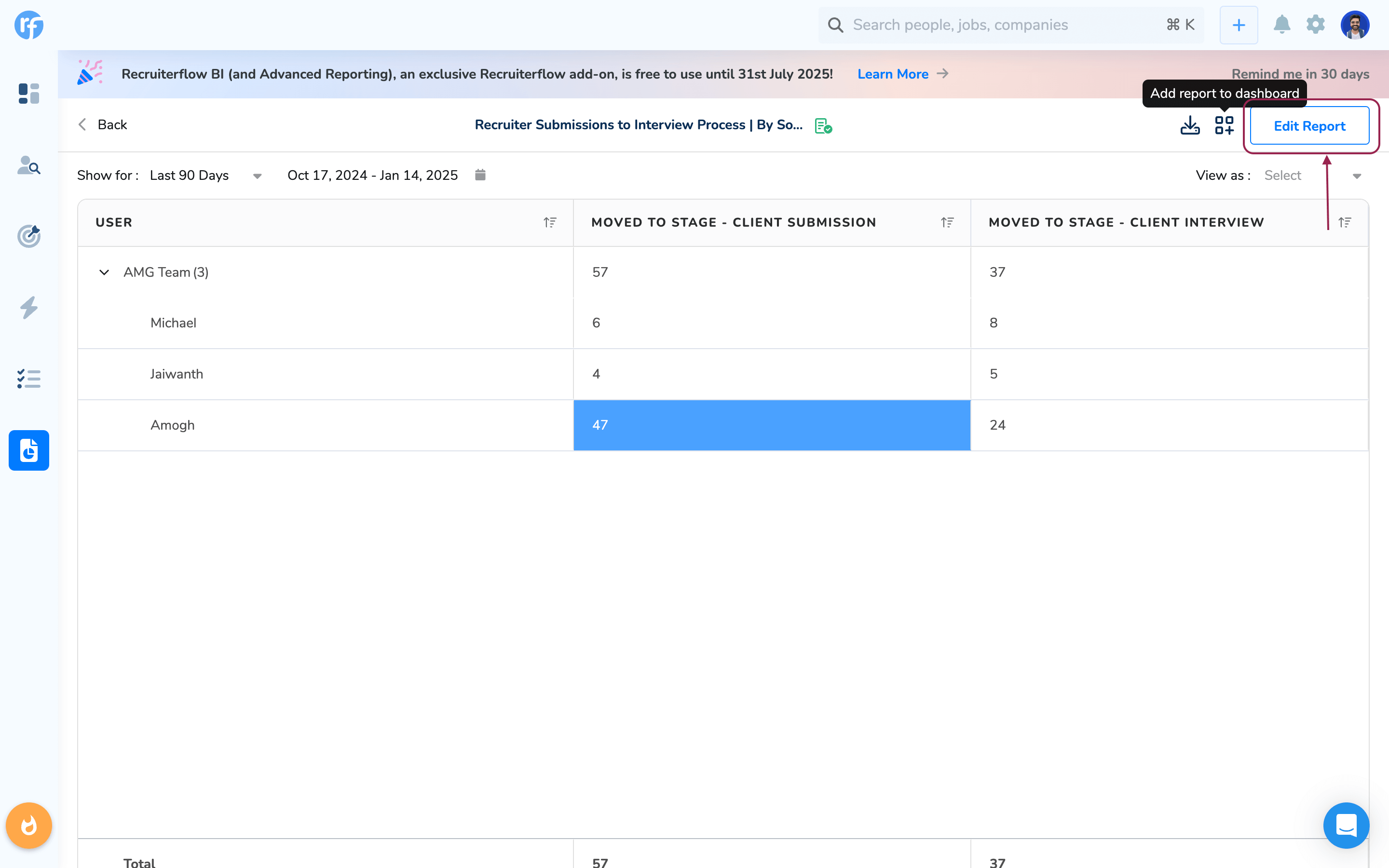
Go a little further and experiment with predictive analytics, a hot topic in 2025. By analyzing past data, you can predict your clients’ future hiring needs and trends.
Like, if you always see a hiring spike for a client during certain months, you can get ahead of the game by building a talent pool or ramping up your sourcing efforts in advance for them.
Don’t forget about your old hiring data! Looking back at past trends can be really useful. If you see that certain roles always take forever to fill, maybe you need to rethink your sourcing strategies or even the job requirements themselves in collaboration with the client.
Also, check our detailed blog on how to reduce time to fill in recruitment.
How Recruiterflow Can Help to Reduce Time to Fill
With Recruiterflow, you get all the reporting tools to track and optimize your recruiting metrics. Plus, it offers way more than that. It’s an AI-first command center that helps you manage all your agency’s recruitment operations.

The only recruitment operations platform your agency needs to scale faster in 2025:
- Integrated ATS & CRM
- Centralized candidate database
- Top-notch recruiting automation
- Multi-channel outreach (Email, SMS, Call & Socials)
- AI-first screening and sourcing tools
- Data enrichment capabilities
- Advanced reporting and analytics
- Open APIs and a host of integrations
Kevin L., Partner and Director of Recruiting, reviewed us on G2Crowd:
“CRM is shockingly good, and with numerous integrations, you can maximize sales and recruiting on the same platform. The price is far lower than many ATSs, and month-to-month is easy. Lastly – the team. They truly care and want to know what can be improved. In my 25 years of recruiting, I have become an expert in ATS systems. I just left Bull Horn (which I NEVER should have signed up for) and will never look back.”
See it in action now: Book a free demo
Recruitment


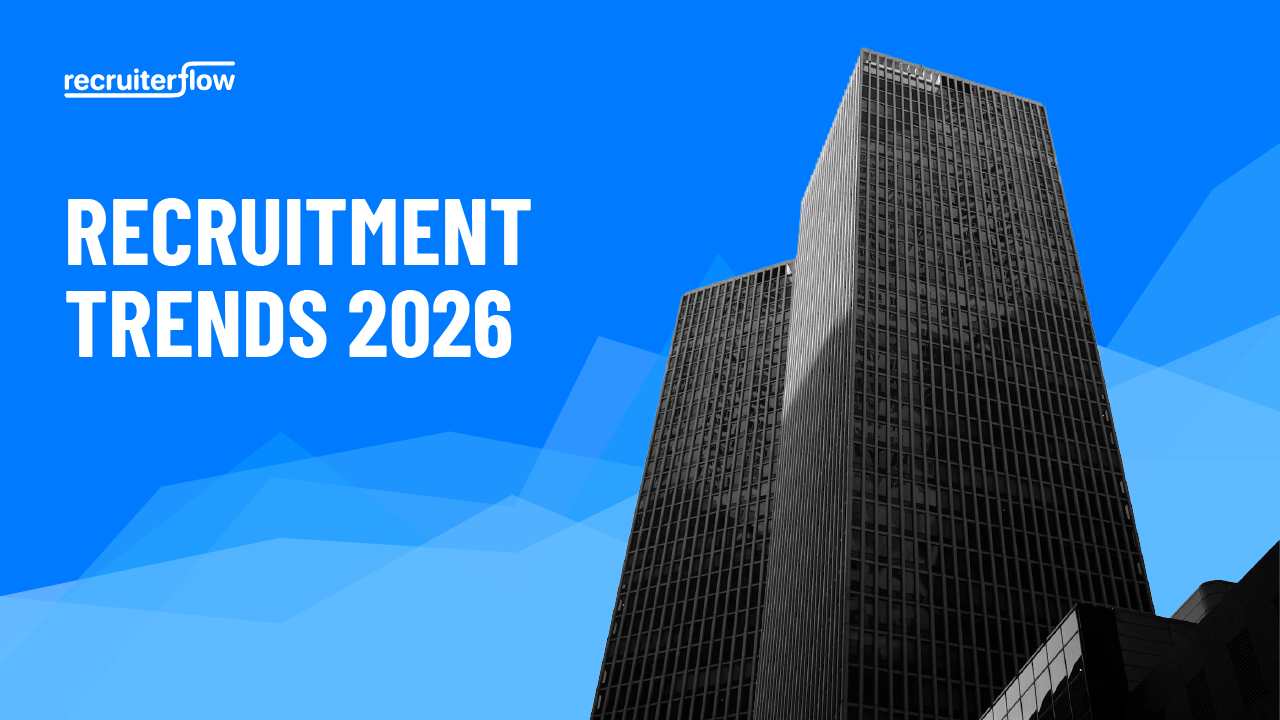
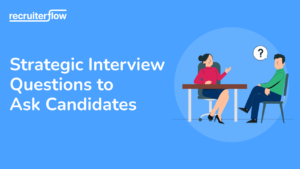

Pragadeesh Natarajan